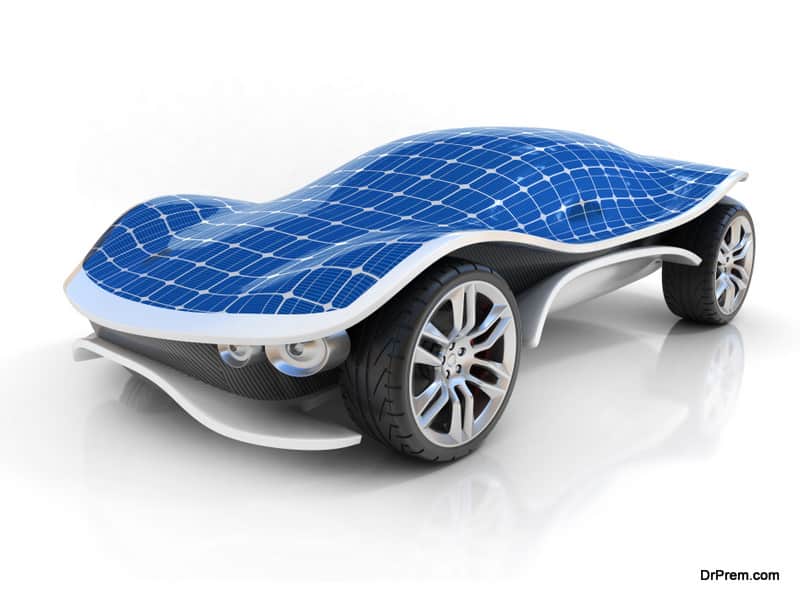With rising costs of fuel and increasing threats of global warming and climate change, automakers all over the world are envisioning vehicles that run on electricity. Although these vehicles don’t necessarily pollute the highways, there overall environmental impact is debatable if the electricity they use continues to be supplied by coal-fired power plants. To make electric cars completely zero-emission, automakers are envisioning vehicles that rely on solar energy. All they have to do is to cover the body of the vehicle with thin-film photovoltaic panels and the car essentially charges it as it moves. Although the idea sounds exciting and can really turn things around for the auto industry, the fact remains that will car owners really want vehicles that depend on an undependable source of energy.
The idea of powering a vehicle with electricity is nothing new and solar energy generation has been around for decades, however, when it comes to a blend of both these technologies, the end result either gets too inefficient or too expensive. In both these cases, solar powered vehicles look like a commercial failure, even if they win handsomely on the environment scale.
- Expensive:
Generating solar energy isn’t affordable, especially if you consider a vehicle that has a large array of solar photovoltaics on its body. Even if we make use of the most efficient solar panels, the energy still has to be stored in onboard batteries, which too aren’t affordable and efficient. For solar energy powered cars to really kick off, inventors have to come up with new means to store energy and have to reduce the cost of thin-film photovoltaics without compromising on their efficiency. If done correctly, solar energy cars will be a little expensive to start with, but will eventually pay off the owner in terms of fuel savings.
- Climate dependency:
Electric cars that are available in the market at present take hours’ worth of AC power to recharge their batteries, after which they can be driven for a few hundred miles at the maximum. Once you’re out of power, you’re left with two options – one is to wait for around eight hours to charge your batteries again, or ditch your ride and use a more conventional form of transport. Now if we envision a vehicle that is powered entirely by solar energy, the batteries will take even longer to charge themselves to their full capacity and in case you’re traveling on an overcast day, you’ll have to pray to god that your car batteries don’t run out until you’ve reached the destination. Solar energy has always been criticized for being too dependent on climate, and hence a car powered solely by solar energy isn’t practical. The only way out in such a scenario is car that has some form of a wind-energy generation system working in tandem with the solar energy generators. As it happens, during overcast days, it is usually windy and when it’s not windy, the sun is mostly shining. However, such a hybrid will cost even more due to the inclusion of a state-of-the-art wind energy generator in the vehicle.
For now, we can say that even if automakers do roll out solar powered vehicles, the elite who have a special place for the environment in their heart will only buy them. The rest will still wait for technology to evolve to a point where automakers figure out ways to power clean vehicles with clean fuel that is generated by a super-efficient mix of renewable energy generating technologies.


